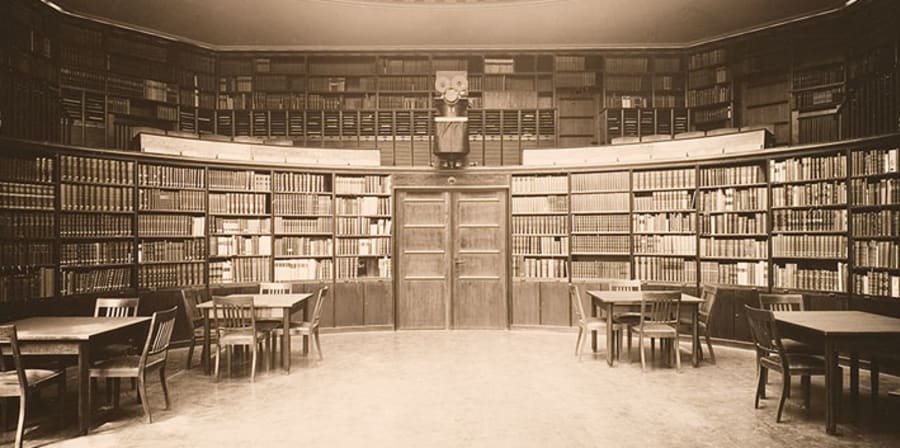
The project addresses questions of image, traversing beyond established research on specific mediums such as painting, photography and print media.
Principal Investigator: Mick Finch
College: Central Saint Martins
Project summary
This project draws together researchers from the Warburg Haus, the Bilderfahrzeuge research project, l’Institut de recherche et d’innovation research association, and from Central Saint Martins’ Fine Art programme, to explore the technical apparatus of the Warburg Haus and its relation to the contemporary media-technological environment.
Founded by art historian and cultural theorist Aby Warburg and opened in 1926 in Hamburg, the Warburg Haus (Kulturwissenschaftliche Bibliothek) was a centre of interdisciplinary research and global exchange in the humanities during the Weimar Republic until in 1933, under threat from Nazism, the Haus was closed and its library shipped to London, where if remains today. Following restoration by the City of Hamburg in the 1990s, the Warburg Haus now operates within the corpus of the University of Hamburg, primarily as a forum for Aby Warburg’s work and also for its archive of political iconography. As the first manifestation of Aby Warburg’s methodology materialized as an institution, the Warburg Haus lends itself to examination as a unique site of production.
Led by Mick Finch, reader in Visual Art Practice, and Martin Westwood, then Frank Martin Research fellow at CSM, an interdisciplinary colloquium was convened in June 2016 at the Warburg Haus with the aim of reconsidering the Warburg Haus (KBW) as a machinery orchestrating Warburg’s research practice within the context of the digital, the image, time and inscription.
The KBW was approached as a material apparatus, a technical infrastructure allowing speculation on its employment as an apparatus with roots in contemporary media-technological conditions and the contemporary banking industry. This proposition has at least two fronts: a material and operational aspect allowing a specific practice of the image to arise; and that operational technology’s influence upon, sanctioning and generator of, Warburg’s larger intellectual project, an influence bearing the marks of technological contemporaneity. With this approach the colloquium explored aspects of material practices that Warburg drew scant attention towards, emphasising economic and media conditions for an art-history of the interval. Any question of a Warburgian method is displaced into a performativity within an innovative Warburgian montage of technology and transdisciplinarity. How is this applicable to our contemporary media-technological environment? A premise to explore is that the KBW and the tafeln can be seen as sites of production that sustain analogy with the digital image and its network.
The colloquium was comprised of members from each of the four partners along with invited participants who addressed one or more of the four motifs of the workshop:
- APPARATUS: The materiality of Warburg’s sources and their mediation within the apparatus of the KBW. Relationships between secondary material, tertiary retentions, (re)production and exposition.
- INSCRIPTION: How Warburg’s project speculates on cultural secondary memory, gesture and grammatization as a site for image retention, inscription and exposition in relation to technical and biological memory.
- DATA: Relevance of Warburg’s approach to his research project for the digital context of images; current value of the rhetorical and indexical idioms Warburg employed and invented; Warburg’s framework for images and data, meta-data and the network.
- SPECULATION: The influence of Warburg’s banking background in its bureaucratic employment in the building and its effect upon Warburg’s expository of time; relations of method and performativity in Warburg’s research explored through a displaced awareness of finance.
In 2017 a special double issue of the Journal of the Philosophy of Photography (Volume 8, Issue 1-2), guest edited by Mick Finch and CSM Frank Martin Fellow Martin Westwood, presented 15 papers from the colloquium on the heritage of Aby Warburg and the apparatus of his library.